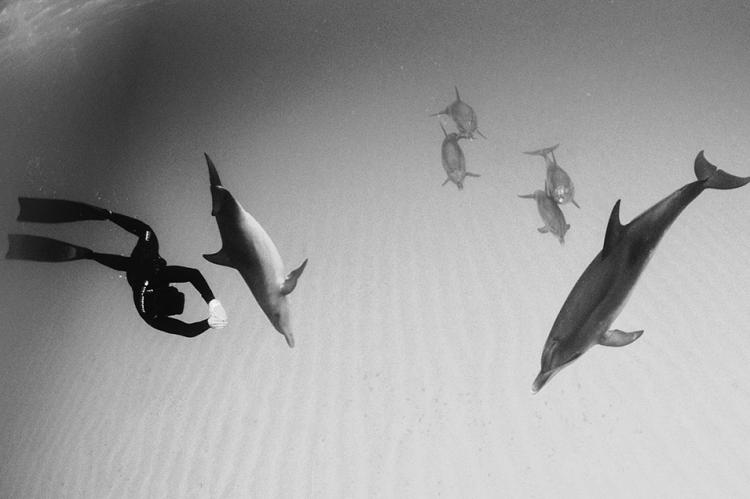Learning the swimming secrets of dolphins and whales
Imagine you’re on a dive. Suddenly, you sense movement and as you turn, you see what looks like a dolphin swimming in the distance. Excitedly, you swim towards it. As you get closer, you realise with bewilderment that this is no dolphin, but an underwater robot in the shape of a dolphin.
This scenario may one day become reality. And to be efficient, such robots would need to be maneuverable and stealthy, and be able to closely mimic the movements of the marine creatures.
Scientists like Keith W. Moored are working on the next generation of underwater robots by studying the movements of dolphins and whales. "We're studying how these animals are designed and what's beneficial about that design in terms of their swimming performance, or the fluid mechanics of how they swim."
Moored is an assistant professor of mechanical engineering and mechanics in Lehigh University's P.C. Rossin College of Engineering and Applied Science. He is also the principal investigator on a Journal of the Royal Society Interface paper that examined the fluid mechanics of cetacean propulsion by numerically simulating their oscillating tail fins.
Cetaceans’ tails come in many shapes. The scientists wanted to find out whether the shape of the tail fin affects the way animals moved their fins (called “kinematics”).
Focusing on five species (bottlenose dolphin, spotted dolphin, orca, false killer whale and beluga whale), the team ran simulations to determine the propulsive efficiency for each species. Then, they swapped the data around, for example, by running a simulation of the orca’s fin shape with the kinematics of a dolphin.
The findings of the 25 swapped simulations surprised the team.
"The pseudo orca fin shape was always the best, meaning it was the most efficient. It didn't matter what kinematics we gave it. And the beluga whale kinematics were always the best, regardless of which shape it was attached to. We didn't expect that, so we started digging into it more and developed this relatively simplistic model of how efficiency scales with different kinematic and shape variables," said Moored.
The model also predicted efficiency beyond the data set and revealed that specific shapes were tailored to specific kinematics.
The team made an interesting revelation about the relationship between circulatory forces and added mass forces that contribute to an animal’s movement.
"A tail that's flapping up and down generates forces just like an aircraft, but it also generates added mass forces that have to do with how fast the fluid is being accelerated," Moored explained. "…We found that the accelerations of the fin are integral to predicting the trends of efficiency, and that was fascinating to us. It ultimately gives us a predictive model that's accurate."
The model can provide a basic design equation for building an underwater robot that performs like a cetacean. Such a robot can be deployed to test hypotheses, to better understand the behaviour of fish schools, to detect submarines and other submersibles and to monitor climate change impact on fish stock populations.





























